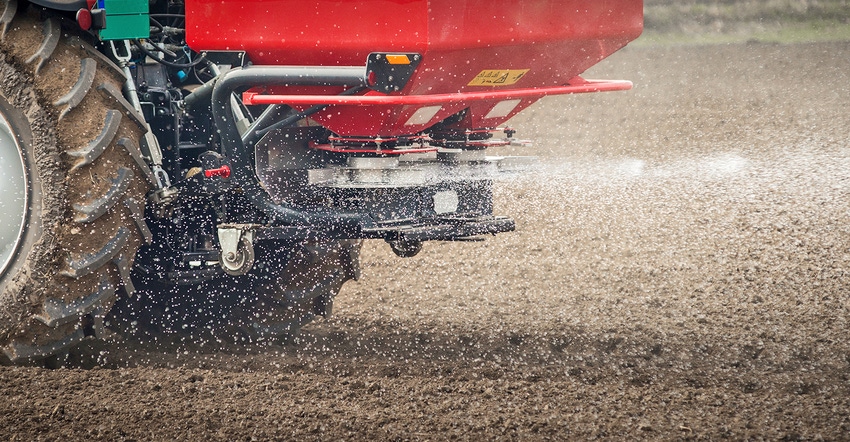
Not content with hosting 17 statewide public meetings last year on the state’s proposed Groundwater Protection Rule, Minnesota Department of Agriculture staff and officials are again making cross-state treks to gather more input from farmers and residents.
MDA made numerous changes to the proposed rule after last year’s meetings. Changes include refining criteria used to define areas with vulnerable groundwater, excluding much of northern Minnesota from fall application restrictions, allowing fall application on specific crops, removing townships from potential regulations, and focusing mitigation efforts on protecting public wells with high nitrate levels.
When it’s all said and done, only 13% of the state’s farmers will be impacted by the fall nitrogen restriction.
MDA officials had said the goal of the proposed rule, which farmers knew as the proposed Nitrogen Fertilizer Management Plan, is to reduce elevated nitrate levels in groundwater and ensure that Minnesota residents have clean, safe and reliable drinking water supplies. The proposed rule would regulate the use of nitrogen fertilizer in areas of the state where soils are prone to leaching and where drinking water supplies are threatened.
At the public meeting held in Red Wing on June 5, MDA Commissioner Dave Frederickson said the groundwater protection rule has been debated and discussed since 1989. Back then, lawmakers voted to give rulemaking authority for it to MDA. However, in the last legislative session, lawmakers took issue with that authority and delayed the rulemaking process. Still, MDA is continuing with meetings until it is told otherwise.
Frederickson noted that the Red Wing session was the 20th meeting on the proposed rule held by MDA over the last year.
Susan Stokes, MDA assistant commissioner, provided a brief historical timeline of the proposed rule. In 1990, the first nitrogen management plan was developed and, through the early 2000s, was further refined with input from the University of Minnesota and ag stakeholders. By 2010, the N plan was ready for a revision, and that process took five years. Last June, the draft N rule was released for informal comments. MDA made numerous revisions based on statewide input, and now residents are reviewing the latest proposed draft.
Dan Stoddard, assistant director of MDA’s Pesticide and Fertilizer Management Division, reviewed the draft, noting that many farmers will not be directly impacted by the proposed groundwater protection rule. Only 2.6 million acres out of 20 million, or 12.6%, are subject to the fall N restriction, he said.
“The state’s nitrogen fertilizer management plan is our guidance” for preventing or minimizing impacts of nitrogen fertilizer on groundwater,” Stoddard said. “The proposed groundwater protection rule supports the plan.”
Stoddard gave an overview of the proposed rule and highlighted changes made based on citizen input:
• Use of nitrogen fertilizer in the fall and on frozen soils will be restricted on quarter-sections of land where 50% or more of the quarter-section is in an area with vulnerable groundwater and in a Drinking Water Supply Management Area that have nitrogen-nitrate levels at or above 5.4 mg/L. Vulnerable areas are defined as areas with coarse-textured soils, shallow bedrock or karst geology.
• Fall N applications will be allowed to establish winter grains, fertilize pasture and perennial crops, produce grass seed, cultivate wild rice, and grow cover crops within a potato rotation.
• Ammoniated polyphosphate (MAP and DAP) can be applied as long as the average applied rate doesn’t exceed 40 pounds of N per acre.
Stoddard added that restrictions do not take effect until Jan. 1, 2020.
An interactive vulnerable groundwater map is available on MDA’s website, allowing a farmer to zoom in on their land to see if it falls within a restriction area.
Stoddard also reviewed specifics pertaining to a Drinking Water Supply Management Area. A DWSMA is the surface and subsurface area surrounding a public water supply well, including the wellhead protection area. Most Minnesota farmland is not located in a DWSMA. However, farmers who find their land impacted will be encouraged to adopt best management practices for nitrogen fertilizer. Further details are available from a proposed groundwater protection rule fact sheet.
3 informational meetings left
The remaining public meetings, which are for informational purposes only, are:
• June 18, 7 to 8:30 p.m., Minnesota West Community and Technical College, 1314 N. Hiawatha Ave., Pipestone
• June 19, 8 to 9:30 a.m., Ridgewater College, 2 Century Ave. SE, Hutchinson
• June 28, 8 to 9:30 a.m., Orville L. Freeman Building, 625 Robert St. N, St. Paul
5 formal administrative hearings
Following these informational meetings, mandatory formal hearings where testimony may be offered before an administrative law judge are:
• July 16, 1 to 6 p.m., Robert Boeckman Middle School, 800 Denmark Ave., Farmington
• July 18, 1 to 4 p.m., Stewartville Civic Center, 105 First St. E, Stewartville
• July 19, 10 a.m. to 4 p.m., Minnesota West Community and Technical College, 1450 College Way, Worthington
• July 25, 10 a.m. to 4 p.m., River’s Edge Convention Center, 10 Fourth Ave. S, St. Cloud
• July 26, 9 a.m. to 3 p.m., American Legion, 900 First St. E, Park Rapids
For those not able to attend the hearings, written comments must be submitted by 4:30 p.m. Aug. 2. The judge must allow written comments to be submitted into the hearing record by the agency and all interested persons for five working days after the hearing ends. At the hearing, the administrative law judge may order this five-working-day comment period extended for a longer period, but for no more than 20 calendar days.
Submit written comments via the Office of Administrative Hearings website.
MDA will not accept written comments on the proposed rule.
Go online for more information about the formal comment process and the groundwater protection rule.
About the Author(s)
You May Also Like






